
Wondering what to do in Geelong and looking for the best Geelong attractions? Then check out the delightfully unique Geelong bollards.
Made out of old timber pylons from the demolished Yarra Street pier, these remarkable works of art are a much loved Geelong attraction.
Each bollard tells a story about the incredible people who played a part in Geelong’s history, from the original indigenous inhabitants to explorers, opera singers, and lifesavers.
They are a visual history of the city and add a playful cheekiness to the Waterfront precinct that visitors love.
Below you’ll find our guide to the Geelong Bollards with everything you need to know about this top tourist attraction in Geelong.
We’ve included the history of the bollards and how they came to be, how they were made, as well as photos and information about different sites along the trail.
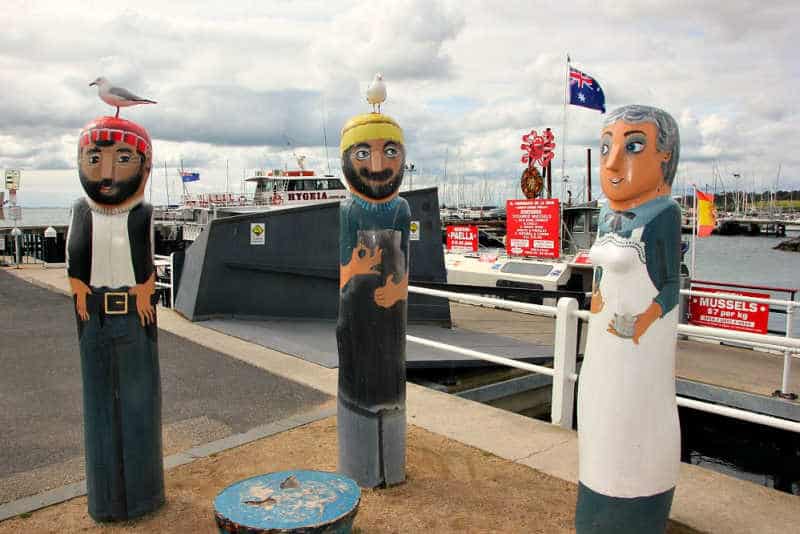
Geelong Baywalk Bollards Trail
The Geelong Baywalk Bollards Trail is a 3-kilometre path that stretches along Corio Bay from Limeburners Point to Rippleside Park.
The path is kept in immaculate condition, is suitable for prams and wheelchairs, and features 103 bollards in 48 unique locations.
It’s ideal for those who are looking for things to do that suit the whole family. Kids love hunting for the painted figures and parents appreciate the history and the artist’s quirky sense of humour.
As a bonus, exploring the bollard trail is one of the cost-free activities in Geelong so it’s perfect for the budget-conscious traveller.
The walk takes around 2 hours (one-way!) and there are heaps of Geelong tourist attractions to see along the way as well as stunning bay views.
The route is also lined with Waterfront restaurants, cafes, and bars where you can stop for a drink and something to eat. So pop on your walking shoes and start exploring!
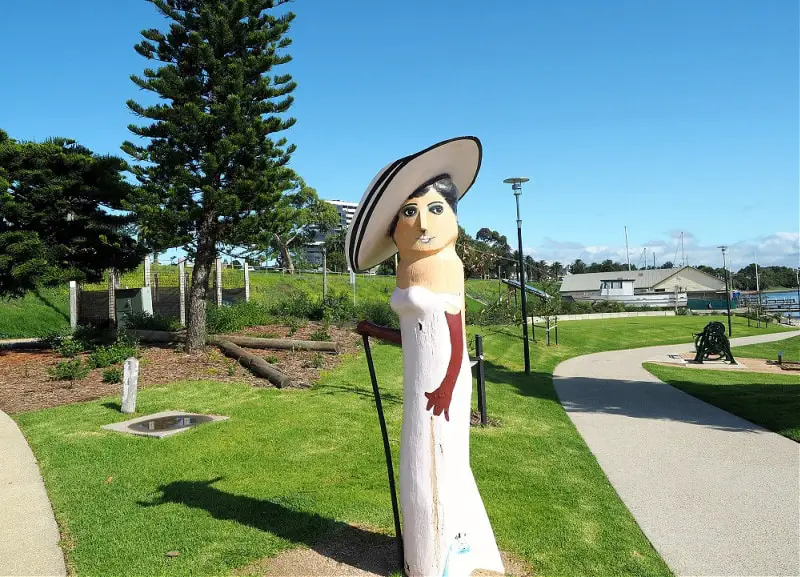
Geelong Bollards History: Jan Mitchell
The work of local artist Jan Mitchell, it’s impossible to talk about the Geelong waterfront bollards without paying homage to their creator.
Melbourne born, for 20 years Jan worked overseas as a graphic artist with the Irish National Television Network. She returned to Australia in 1984 and freelanced in illustration and design, before developing a successful career in limited-edition fine art printing.
In 1990, Jan created her first bollard series in Barwon Heads as part of an ‘Artists in Schools’ project. It was designed to encourage children to walk to school with a trail of bollards leading the way.
In 1994 she presented Geelong Commissioners with the idea of creating a similar trail of bollards along the Geelong foreshore. They agreed to her proposal and the Baywalk Bollards became a key part of the revitalisation of the Geelong Waterfront.
The bollard project took 5 years to complete (1999) and for more than 20 years they’ve been one of the most popular things to see in Geelong.
In 2000 Jan Mitchell received an Order Of Australia Medal for her contribution to Geelong’s waterfront transformation.
Sadly she passed away in 2008.
A year later to honor Jan the Geelong Wool Museum held a commemorative exhibit that paid tribute to her vision, craftsmanship, and the mesmerising bollard walk.
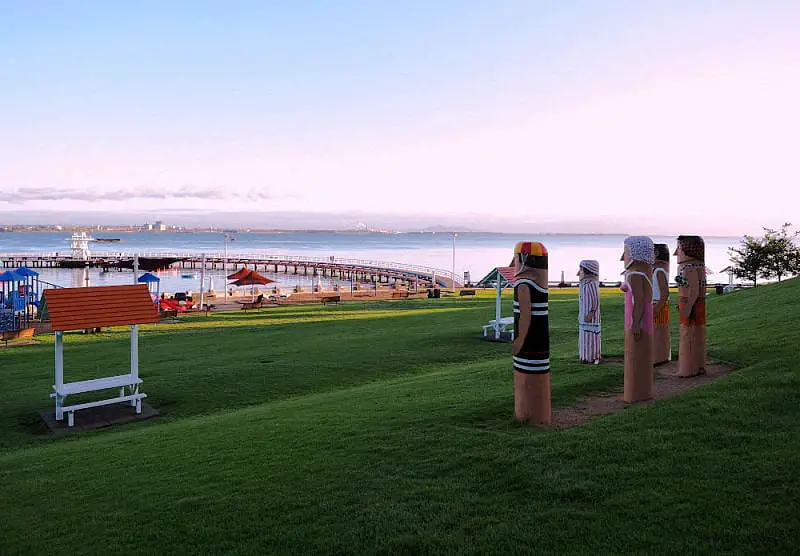
How The Geelong Bollards Were Made
Created on the Waterfront in a huge old wool store close to Cunningham Pier, the timber for each bollard was chosen from either Australian red ironbark or turpentine hardwood.
Additional fixtures and adornments were made from industrial components.
The bollards were first sculpted and shaped by carver and prop maker Pieter Roos. They were then painted by Jan and her assistant John Starr using the trompe l’oeil (three-dimensional illusion) technique.
The fun figures stand over 2 metres tall and are designed to be tactile and interactive. You can’t visit Geelong without hugging a bollard!
Jan had a cheeky sense of humour which can be seen in many of her creations. For instance, the Tram Conductress doesn’t wear a wedding ring but she’s knitting baby bootees – quite scandalous by 1940’s standards.
Look For The Rabbits!
One of the fun activities in Geelong for kids (and grown-ups!) is to spot the rabbits lurking around the bollard’s feet.
They represent the introduction of rabbits to Australia on Christmas Day in 1859.
Australia’s wild rabbits are descended from 10 pairs imported by Winchelsea farmer Thomas Austin through the Port of Geelong.
(Little did he know of the havoc they would wreak on the country’s natural ecosystem).
Many of the bollards from this era sport hidden rabbits at their toes and kids love trying to find them.
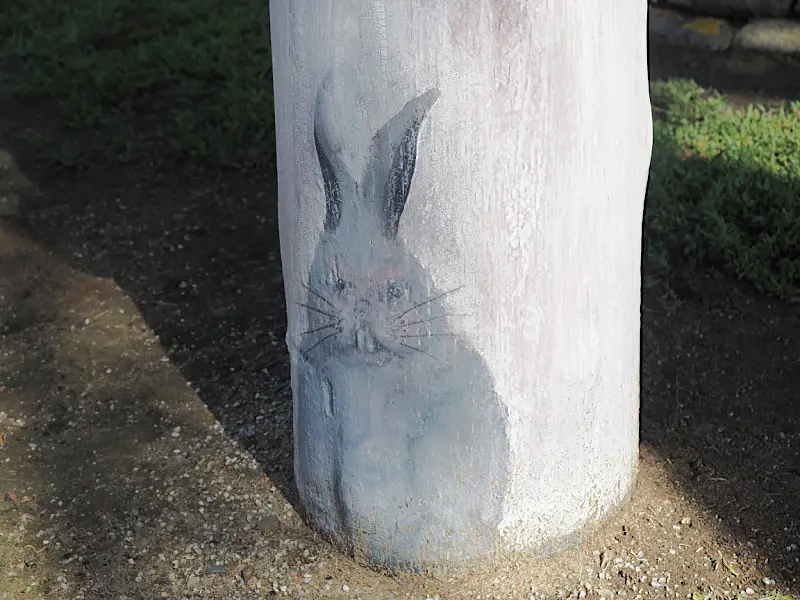
The Geelong Baywalk Bollards
The Geelong Waterfront Bollards add another dimension to the already fabulous foreshore precinct. They’re the most photographed faces in town and each one tells a story from the city’s past.
They represent a whole spectrum of local characters from the Sisters of Mercy and Nancy Natty Knickers, a Koori family, and Ian McDonald the city surveyor who drew plans for the Eastern Beach complex.
Below you’ll find information and photos of the bollard attractions in Geelong. Be sure to add them to your things to do Geelong list.
A booklet about the Baywalk Bollards is available for purchase from the carousel on the waterfront.
Bathing Tableau
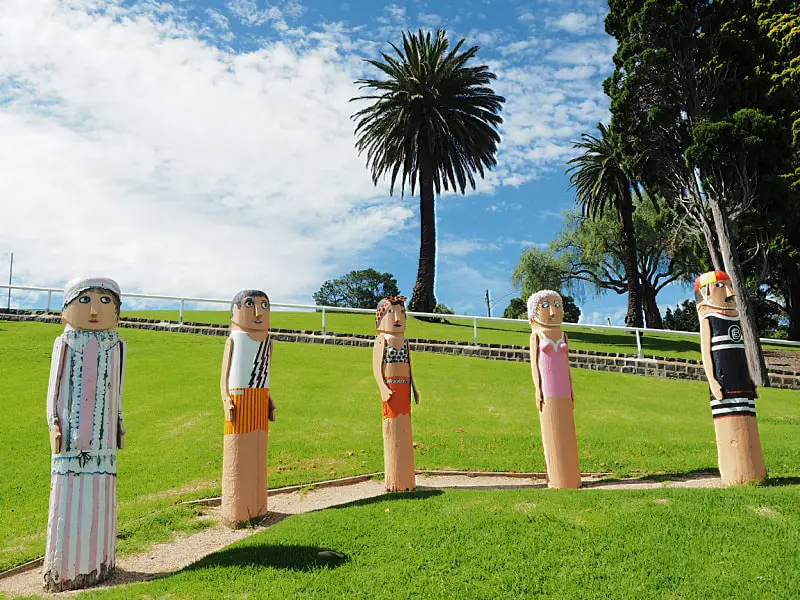
These five delightful figures display the changing styles of swimming costumes throughout the years.
There are two women from the 1890s and 1940s, a man from the 1920s and a 1930s lifesaver. Then there’s Pam from the 1950s wearing a pink petal bathing cap that was made from wing nuts.
Western Beach Sea Bathing Co.
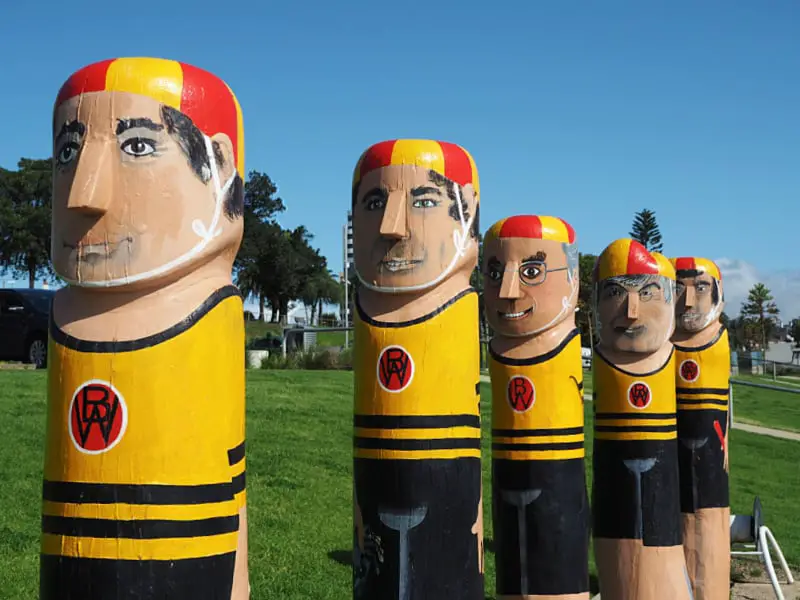
The Western Beach Sea Bathing Company was established in 1872.
The ‘swimmers’ are also portraits of politicians Gordon Scholes, Nipper Trezise, Jeff Kennett, and a young Sir Hubert Opperman.
Former Prime Minister John Howard is depicted wearing glasses that are tied on with knicker elastic!
Early Geelong Footballer
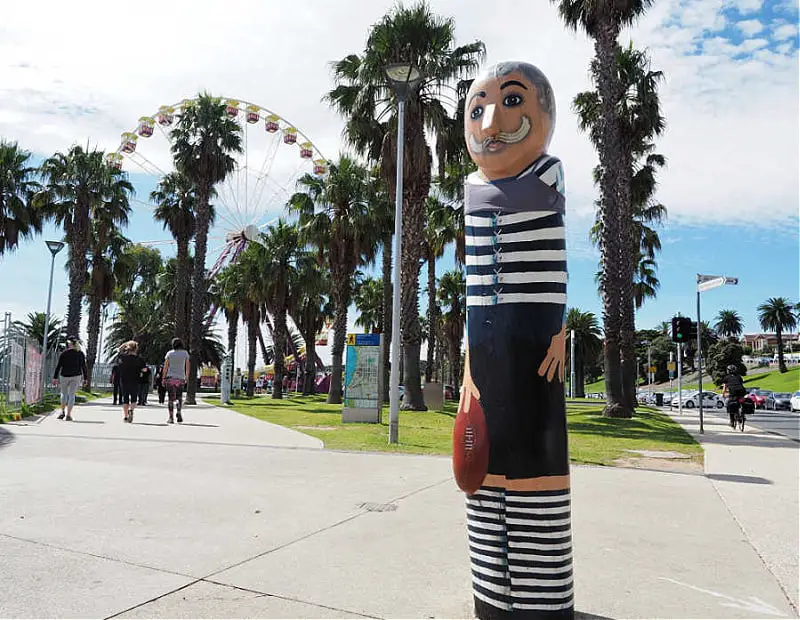
Formed on the 18th of July 1859, the Geelong Football Club is one of the oldest football clubs in the world.
About 100 years ago the area around this statue was used as a practice ground until the footy players were asked to move on and it became Transvaal Square.
Fireman Bollard
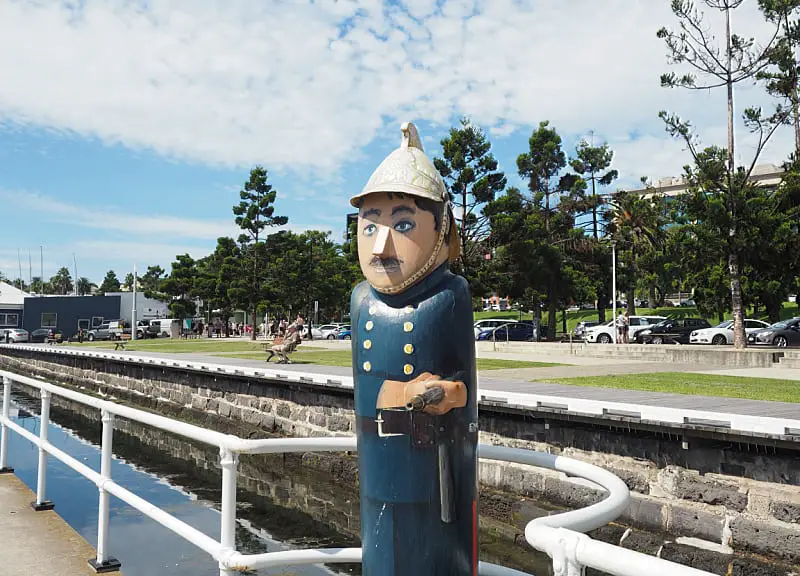
In 1869 a public fire service was established in Geelong when a clipper loaded with wool and tallow was struck by lightning and the town’s privately employed firemen banded together to put out the blaze.
This bollard is a memorial to the five firemen who died in the 1998 Linton bushfires.
Bathing Beauties
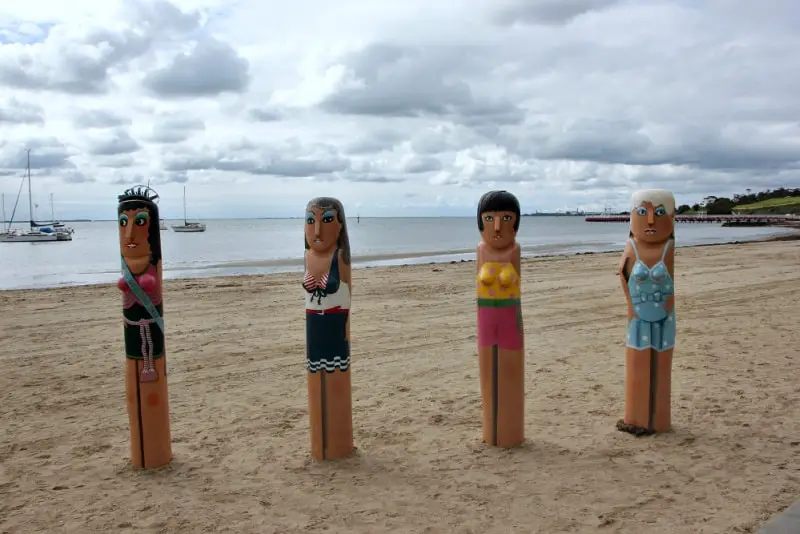
These beautiful busty ladies are a throwback to a time when beauty pageants were held at Eastern Beach.
Today these types of pageants are frowned upon but records show how much the huge crowds enjoyed them at the time.
Nancy Natty Knickers
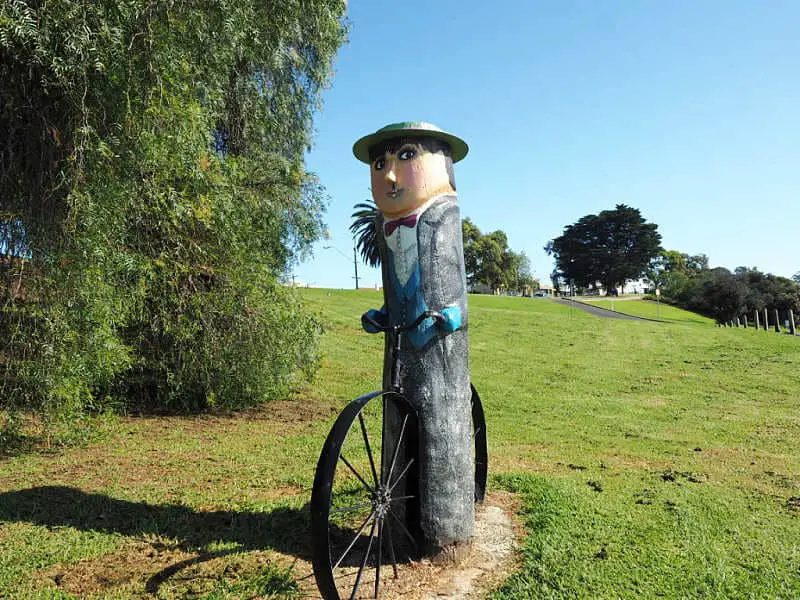
This active lady represents Geelong’s engineering heritage which began at the nearby Western Foundry in 1869. The foundry manufactured velocipedes like the one seen here.
It was quite daring for women to wear trousers in the late 1800s. Natty Knickers is the name given to the breeches that lady cyclists wore when they rode these velocipedes.
Geelong Bollards Further Afield
As well as the Waterfront bollards there are characters in other locations. You’ll find them at the Geelong Botanical Gardens, in Barwon Heads, and even at Melbourne and Avalon Airports.
Geelong Botanic Gardens
There was much rivalry amongst the young ladies of Geelong who liked to collect rare blooms for their flower presses.
They particularly liked Sturt’s Desert Pea shown here clasped behind the pretty lady’s back. The gentleman accompanying her is the garden’s founder Daniel Bunce.
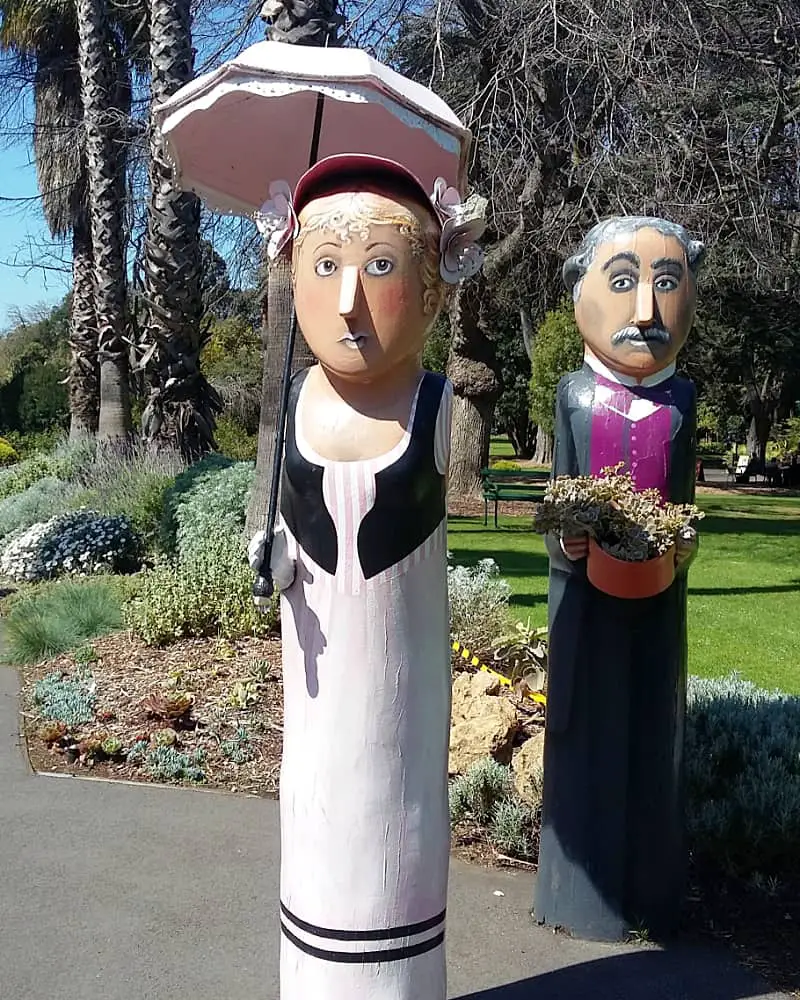
Barwon Heads
The bollards at Barwon Heads were created before the Geelong Bollards and feature a troop of marching soldiers. You can find them on the main road in Barwon Heads on the Bellarine Peninsula.
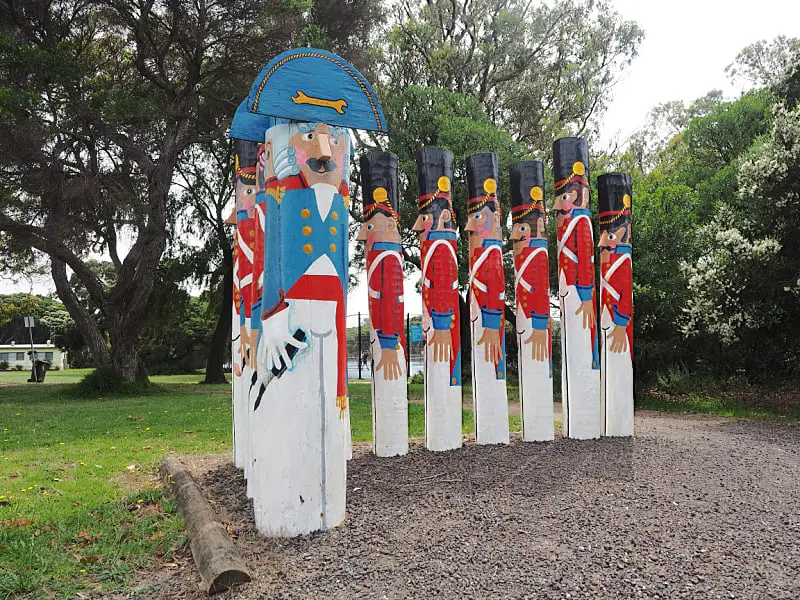
Final Word
The Geelong Bollards aren’t just any statues, they’re a fun mix of art and history, telling the stories of real people who made Geelong what it is today.
From the first people who lived here, to adventurers, politicians, lifesavers, and even singers, each bollard has its own tale to share.
Walking around the Waterfront, looking at these bollards, is like going on a treasure hunt through time.
You get to learn about Geelong’s history in a fun way, seeing how the city remembers its heroes and history in a cool, artsy way.
[link-whisper-related-posts]
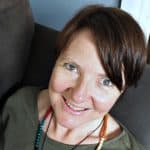
By Audrey Chalmers
Audrey grew up in Victoria and travelled the world but she always called Victoria home. She loves nothing more than exploring her home state and sharing it here.
